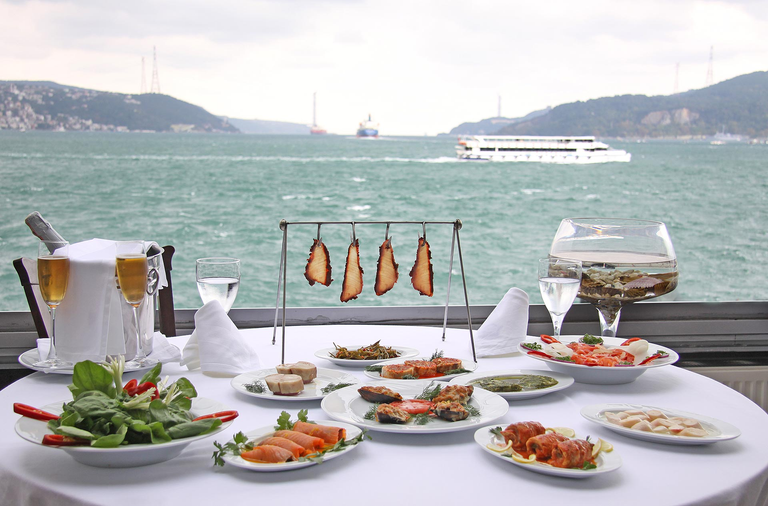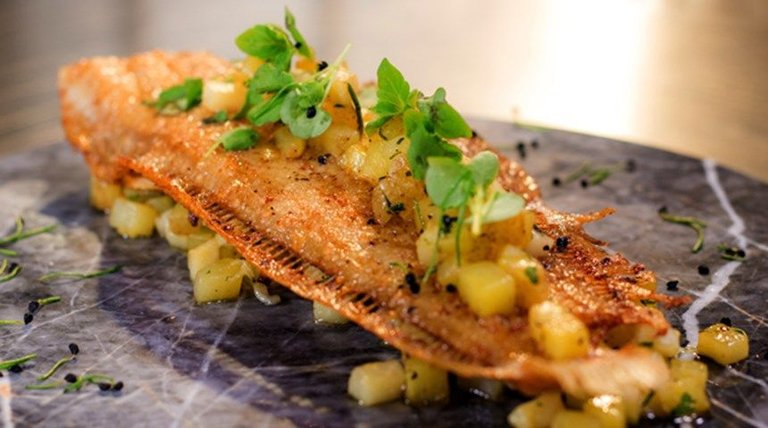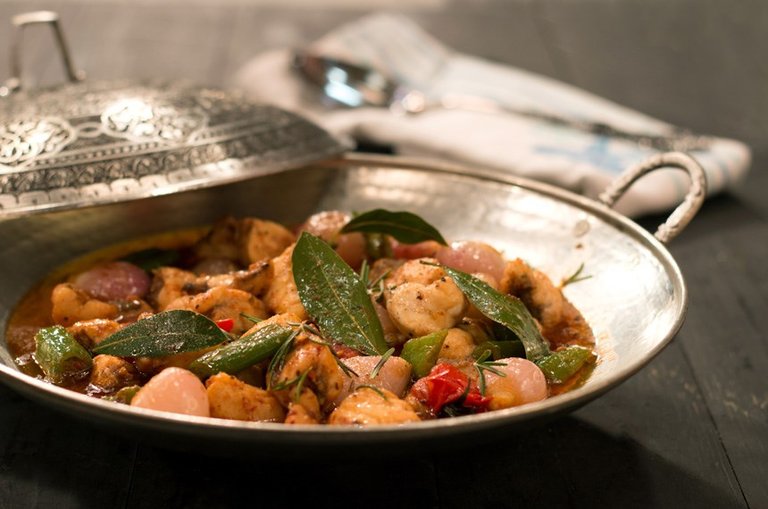In this series i will bring report you the "tastiest fish" which can be found in the seas of the Republic of Turkey.
Which fish are the tastiest in which months and seasons? Which fish are the most preferred? Which fish tastes grilled better and which fried? Which bred fish are on the list? Is the taste of the fish different in size? All these questions were answered by a jury in Istanbul. The jury consists of gourmets, water product experts and fishermen, who are active in the fish market hall.
Cinekop / Lüfer (Little Blue)
The Blausch occurs in the ocean and in waters on the coasts. Most commonly, the blue is found along the beaches and in cliffs, headlands in high-energy waters, although adults can also live in estuaries and in brackish water. Small fish stay in a small coastal area in a depth of about 2 meters and form schools. The adults live in loose swarms, the swarms are often attacked by mullets or other fish. His diets include other fish, crustaceans and cephalopods. The Blausch often lives in company. The blue can be quite greedy and aggressive. In winter, the blue migrates to warmer water and in the summer he seeks cooler water. The Blausch is a popular Edelsch and is mostly fresh, but also dried, salted or frozen marketed. The large specimens of which are currently in the Mediterranean, there is the small form in Istanbul.
Dil (sole)
Sole is one of the oldest known dishes, and for thousands of years its tender white flesh has been appreciated. It is counted among the group of plaques, of which there are 46 different species in European waters alone. The sole is one of the most delicate representatives of the plaice. Their way of life is typical for Grundsche. During the day she digs in the sandy seabed, at night she goes on prey search. Their main food consists of thin-shelled clams, bristle-worms, crabs and occasionally also small fish, e.g. Maize and sandals. If she is attacked by an enemy, she imitates with great "talent" the fish-feared, poisonous Petermännchen by she unfolds her provided with a large deep black patch right abdomen and chase the attacker like a "death angel" in the escape. Solees live at depths of 10 to 60 meters. Feeling cold, they retreat to the deep valleys of the sea during the winter months to reach warmer water zones. In early summer, they migrate back to the achen coastal waters to spawn there. The symmetrically-built larvae, which only "break down" during their development and then assume the typical Plattsch appearance, hatch after about ten days in the open water and have a length of three millimeters. The tongues become sexually mature with the third to fifth Lebensjahr and are then 25 to 30 centimeters long. Sole can grow old for up to 17 years - if they are not caught beforehand. The adult animals reach a length of 50 to 60 centimeters and thereby a weight around 300 to 400, sometimes over 2000 grams. Characteristic of sole: The males are slightly smaller than females of the same age. Relatively rare and relatively expensive. At the small fry you will not be able to eat the fish, only in the restaurant.
Fener (monkfish)
The monkfish is a well-adapted groundfish that lives in coastal areas and to depths of over 1,000 meters, both over sandy soils and over mud bottoms. The monkfish belongs to the Raubschen. Its main food is sea ale, gurnards, stingrays and other ground-level fish. While fishing, he uses his first dorsal ray as "Angel", with which he lures his prey. When the victim has come close enough, he grabs his huge mouth. But other animals are not safe from monkfish; even diving birds have already been found in his stomach. In our latitudes the monkfish spawns in the period between April and June mainly north, west and south of the British Isles at over 400 meters depth. There he spawns about one million eggs, which are initially embedded in a violet mucus band eight to ten meters long and 15 to 45 centimeters wide. These spawning masses drift freely in the water during their development, are torn into fragments by the waves and are driven away by the current. The bizarre-looking larvae live up to a length of six to eight centimeters pelagic and then pass in the darker water to life on the ground. As they grow older, they also seek out the greater depths. In the meantime, one of the most sought-after Mediterraneaners, above all because of its solid and white flesh. By the way, "Fener" is called "Lantern" because it has a wobbling projection on the nose.




Follow 4 follow
Teşekkürler...